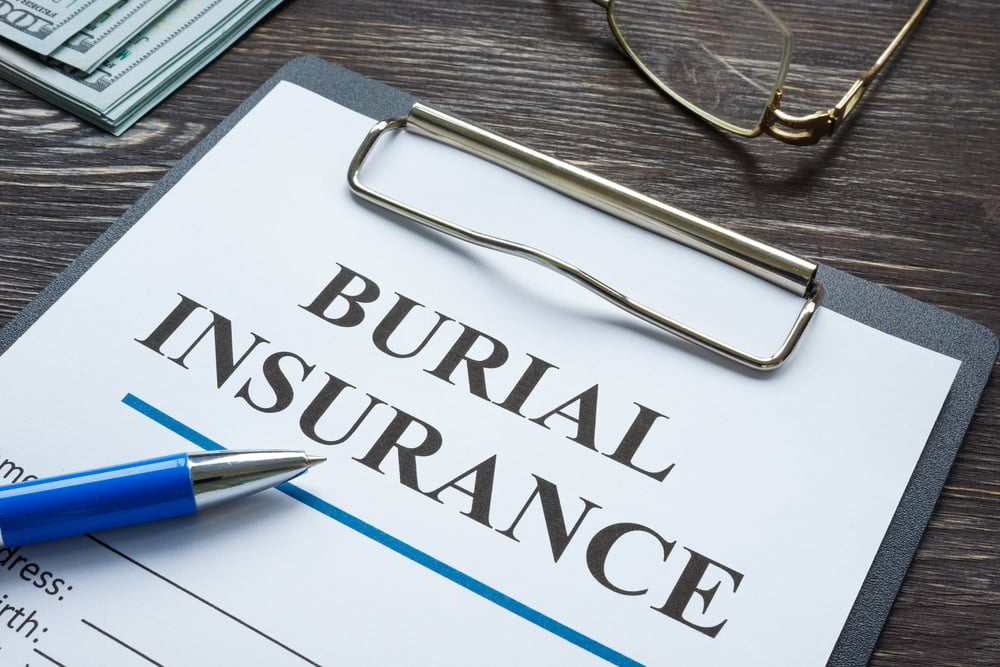3 key things to know about burial insurance

Many people associate insurance with monetary coverage during their lifetime, but end-of-life expenses can be higher than medical costs. The end-of-life expenses or burial costs, such as a funeral, settling pending medical bills, post-burial rites costs, and others, can be covered by burial insurance. That said, there are certain important details one should know about burial insurance before putting their hard-earned money on a policy. Here are some such details:
Things covered by burial insurance
Here are some of the key expenses that burial insurance covers for policyholders:
- Post-life medical bills of covered individuals
- Related legal costs involved in the post-life phase of policyholders
- Outstanding debts of policyholders (insurance companies will set clear terms and boundaries regarding the amount of debt they will cover)
- Burial expenses of policyholders (Interment costs will be included in this package)
- Cremation costs of policyholders
- Funeral arrangement expenses, including the costs incurred during viewing and service of the policyholder
- In some cases, all the post-life transportation expenses of immediate family members incurred during the funeral of policyholders are covered. However, insurance companies are likely to set boundaries around this factor.
Types of burial insurance
Burial insurance comes with multiple classifications. Some of the common types of burial insurance policies include:
Simplified issue life insurance
Until the age of 80, there are many options for final expense life insurance; however, not many companies cover expenses after the age of 85. In simplified insurance, policy seekers need to undergo a comprehensive medical examination for eligibility verification. During the signing and settlement of the policy purchase, applicants will also need to answer multiple health-related questions.
As expected, any pre-existing medical conditions or terminal illnesses rule out an individual from becoming a policyholder. Simplified policies tend to pass through the approval phase much faster than the other kinds of burial insurance policies. The downside is that the premium of simplified issue life insurance burial policies is always on the higher side compared to the others.
Guaranteed issue life insurance
Whereas simplified issue life insurance burial policies are hard to get (in terms of the number of approval phases before one can purchase a policy), guaranteed issue life insurance burial policy is relatively easier to get. Unlike simplified burial insurance, these ones do not require health questions or medical exams. Any individual who applies for these policies generally tends to get them. All one has to do is fall within the age limit specified in the insurance policy’s terms and conditions.
Arguably, the biggest catch in this situation is that guaranteed issue life insurance policies have incredibly long waiting periods. During this waiting period, if the policyholder passes away, their beneficiaries will receive only a part of the total insurance amount. Like simplified issue life insurance policies, these also come with high premium costs for policyholders.
Pre-need insurance
Pre-need insurance policies are unique because they are directly purchased by funeral homes to cover their part of an individual’s end-of-life expenses. Pre-need insurance policies cover certain burial services and prearranged funeral costs borne by the policyholder’s immediate family members.
The insurance company providing these policies sends the funds directly to the funeral home, crematoriums, or burial service providers. The name and location of the funeral arrangers and executors will be specified by the buyer of the policy during the purchase phase.
Besides these, there are other kinds of burial insurance policies. Some of those include whole life insurance burial policies and term life insurance burial policies.
Things to consider before purchasing burial insurance
Here are the main consideration points when one contemplates purchasing burial insurance:
Rates and terms across multiple insurance providers
One must always check multiple insurance providers and the terms and conditions they apply to their products before narrowing down their list to a few companies. Focusing on just one or two companies can result in people missing out on potentially great offers and super-low premiums that other insurance providers may offer their clients. One must thoroughly research all the companies using factors such as online reviews and the opinions of friends and family members who bought the policy from the same company in the past.
Types of policies available for end-of-life expense coverage
Apart from the policyholder’s age, there are many other things that insurance providers cover, including one’s medical history, accidents and other physically life-altering events one may have gone through, and similar other monumental aspects of the potential policyholder’s life. Based on such aspects, companies design different kinds of policies to suit specific clients. One must go through the entire repertoire of insurance companies to know everything there is about each kind of policy and the individual pros and cons of them all.
Premium flexibility and payment frequency
As is the case with purchasing any product, one must check and, if possible, verify if there is any room for negotiation while purchasing burial policies. Certain companies may have high premium rates but may also have a vast scope of coverage in the post-life phase of a policy. One must remember that “costliest” does not automatically equate to “best” when it comes to burial insurance. Nevertheless, if the scope of coverage is vast and the insurance provider is flexible in terms of premium payments, then individuals can definitely delve deeper into such companies and their policies.







